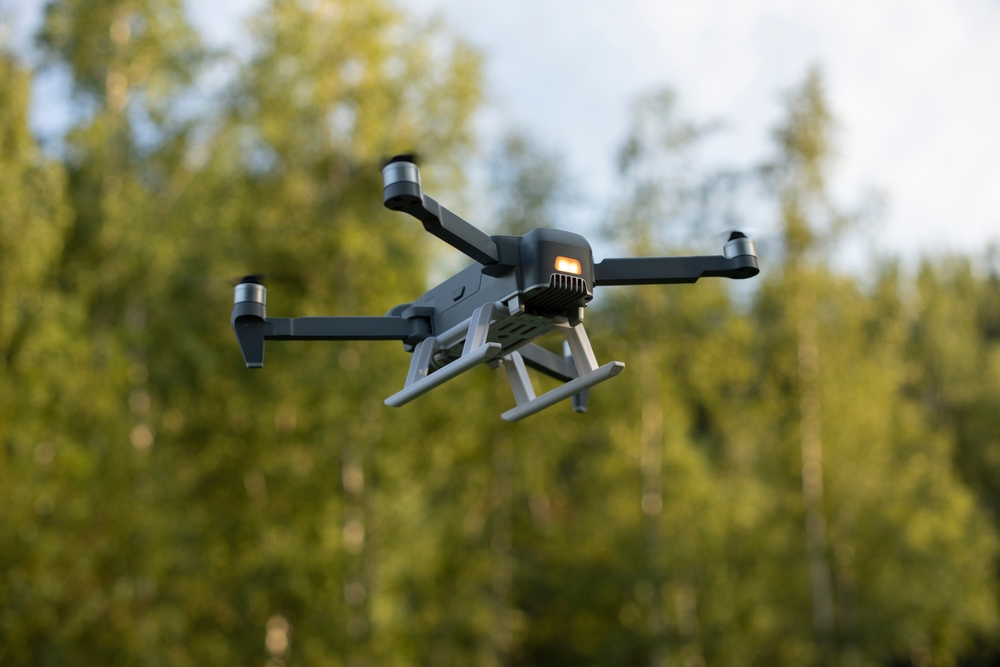US Drone Buyer's Guide: Top Models and Key Features for 2025
Ready to take to the skies? In 2025, the world of drones is more exciting and accessible than ever. Whether you're a beginner or an experienced pilot, our guide helps you navigate the options, highlighting the top models, essential features, and important regulations you need to know to make the perfect choice.

How Do You Choose the Right Drone for Your Needs?
Choosing the right drone starts with identifying your primary use case. Recreational users might prioritize ease of flight and camera quality for social media content, while professional photographers need advanced image sensors and gimbal stabilization. Consider your skill level carefully – beginners benefit from features like obstacle avoidance, GPS return-to-home functions, and simplified flight modes.
Flight time is another crucial factor, with most consumer drones offering 20-40 minutes of airtime per battery. If you plan extended shooting sessions, look for models with swappable batteries or longer flight capabilities. Range requirements vary too – casual users might be satisfied with 500-meter range, while content creators often need 2-8 kilometers of transmission distance for expansive shots.
What Key Features and Specs Matter Most?
Camera specifications top the priority list for most drone buyers in 2025. Look for 4K video recording at minimum, with higher-end models offering 6K or even 8K capabilities. Sensor size significantly impacts image quality – larger sensors capture more light and detail, especially in challenging conditions. Three-axis mechanical gimbals provide superior stabilization compared to electronic stabilization alone.
Flight performance features include maximum speed, wind resistance, and altitude capabilities. Professional drones often handle winds up to 25-35 mph, while recreational models typically manage 15-20 mph gusts. Smart flight modes like ActiveTrack, Point of Interest, and waypoint navigation add creative possibilities. Obstacle avoidance sensors – forward, backward, and sideways – prevent costly crashes and boost confidence for newer pilots.
What Do You Need to Know About FAA Regulations?
Understanding FAA regulations is essential for legal drone operation in the United States. Recreational pilots must register drones weighing over 0.55 pounds and pass the TRUST test, a free online educational program. Commercial operators need a Part 107 Remote Pilot Certificate, requiring a written exam and periodic recertification.
Key operational rules include flying below 400 feet, maintaining visual line of sight, avoiding airports and restricted airspace, and never flying over people or moving vehicles without proper authorization. The B4UFLY app helps identify legal flying areas, while LAANC (Low Altitude Authorization and Notification Capability) enables automated airspace approvals in controlled areas. Night flying requires anti-collision lighting, and flying over people demands specific drone categories with safety certifications.
Which Are the Top Drones for Different Budgets?
Budget categories help narrow your search effectively. Entry-level drones under $300 include models like the DJI Mini SE and Holy Stone HS720E, offering basic 2.7K-4K cameras and 20-25 minute flight times. These provide excellent learning platforms without major financial risk.
Mid-range options between $400-$800 feature the DJI Air 2S and Autel EVO Lite+, delivering superior camera quality, longer flight times, and advanced features like obstacle avoidance. Professional-grade drones above $1,000 include the DJI Mavic 3 series and Autel EVO II Pro, offering cinema-quality cameras, extended range, and comprehensive safety systems for serious content creation.
| Drone Model | Manufacturer | Key Features | Price Range |
|---|---|---|---|
| DJI Mini 3 | DJI | 4K/60fps, 38min flight, lightweight | $400-$500 |
| DJI Air 2S | DJI | 1-inch sensor, 5.4K video, obstacle avoidance | $600-$700 |
| DJI Mavic 3 | DJI | Dual camera, 46min flight, professional features | $1,200-$2,200 |
| Autel EVO Lite+ | Autel | 6K camera, 40min flight, 3-axis gimbal | $800-$900 |
| Holy Stone HS720E | Holy Stone | 4K camera, GPS, budget-friendly | $200-$300 |
Prices, rates, or cost estimates mentioned in this article are based on the latest available information but may change over time. Independent research is advised before making financial decisions.
Where Should You Buy and What About Warranty Coverage?
Authorized retailers provide the best warranty protection and customer support. Major electronics stores like Best Buy offer hands-on experience and local service support, while online platforms like Amazon provide competitive pricing and fast delivery. Direct manufacturer purchases often include extended warranty options and exclusive bundles.
Warranty coverage typically includes manufacturing defects and component failures, but rarely covers crash damage or user error. DJI Care Refresh and similar programs offer accident protection for an additional fee, covering water damage, collision damage, and flyaway incidents. Third-party insurance options exist for commercial operators requiring liability coverage and equipment protection beyond standard warranties.
The drone market in 2025 offers unprecedented variety and capability across all price points. Success depends on matching your specific needs with appropriate features while staying compliant with federal regulations. Whether capturing family memories or launching a commercial aerial photography business, the right drone awaits your discovery. Take time to research thoroughly, understand the regulations, and consider your long-term goals before making this exciting investment in aerial technology.




